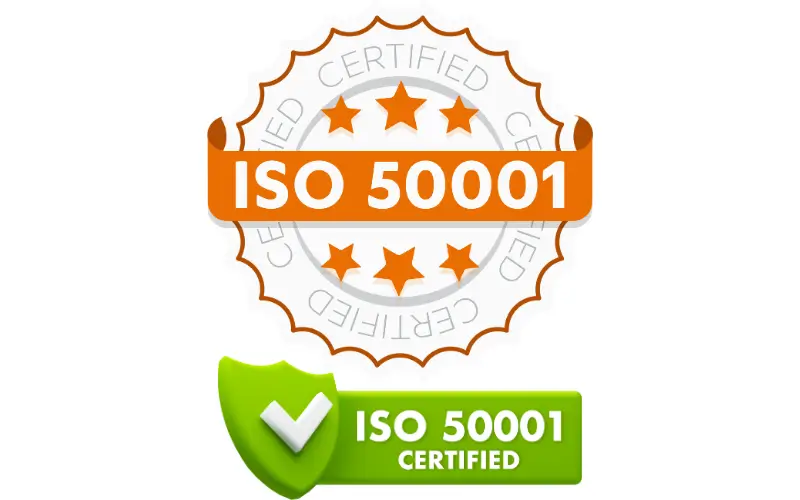In the high-stakes world of manufacturing, where every unit of energy directly impacts production costs and profit margins, energy efficiency is no longer optional—it’s essential. As global energy prices fluctuate and environmental regulations tighten, manufacturers are under increasing pressure to optimize operations without compromising output. That’s where energy audits come in.
An energy audit is a systematic review of energy use within a facility. It identifies where energy is being wasted and provides actionable insights to reduce consumption, cut costs, and improve operational performance. For manufacturers—who often operate energy-intensive equipment around the clock—regular energy audits are a powerful tool for long-term sustainability and profitability.
This post will explore the key benefits of conducting regular energy audits in manufacturing facility, including cost savings, improved equipment efficiency, environmental impact reduction, and compliance with energy regulations. Whether you’re managing a small-scale production unit or a large industrial facility, understanding and implementing energy audits can transform the way you operate.
Understanding Energy Audits in Manufacturing
What is an Energy Audit?
An energy audit is a comprehensive assessment of how energy is used in a facility. The goal is to identify inefficiencies, uncover wasteful practices, and recommend improvements that reduce energy consumption without sacrificing productivity. In manufacturing, this means examining everything from heavy machinery and HVAC systems to lighting, insulation, and compressed air systems.
There are three primary types of energy audits, each offering different levels of detail:
Preliminary (Walk-Through) Audit:
- A quick, surface-level assessment.
- Identifies obvious areas of energy waste.
- Ideal for smaller facilities or as a first step.
General (Standard) Audit:
- A more detailed analysis involving data collection and utility bill examination.
- Provides baseline energy use data and estimates potential savings.
- Recommends cost-effective improvements.
Investment-Grade Audit (IGA):
- The most in-depth audit, typically used when pursuing major upgrades or financing.
- Involves real-time monitoring and detailed economic analysis.
- Justifies capital investments with calculated returns and payback periods.
Importance of Energy Audit in Manufacturing
Manufacturing facilities are some of the most energy-demanding environments. Equipment like furnaces, chillers, air compressors, and conveyor belts run continuously—making even small inefficiencies costly over time.
Why energy audits are especially critical in manufacturing:
- High Energy Consumption: Production lines, automation systems, and industrial equipment require large amounts of electricity and fuel.
- Hidden Inefficiencies: Compressed air leaks, outdated motors, and inefficient lighting systems can silently inflate energy bills.
- Regulatory Pressure: Environmental regulations are stricter than ever, and compliance often hinges on efficient energy use.
- Competitive Advantage: Reduced energy costs translate to lower production costs and increased competitiveness in pricing.
In short, energy audits provide manufacturers with the insights needed to make smarter, data-driven decisions. By identifying where energy is wasted, facilities can take targeted action to improve performance and sustainability.
Key Benefits of Regular Energy Audits
Regular energy audits aren’t just one-time fixes—they’re strategic tools that unlock ongoing value for manufacturers. By routinely assessing energy performance, companies can stay agile, optimize operations, and meet evolving sustainability goals. Let’s break down the core benefits in detail.
Cost Savings
Energy audits are one of the most cost-effective ways to reduce operational expenses in manufacturing.
- Identify Wasteful Energy Practices: Audits often uncover simple inefficiencies—like machines running idle, HVAC leaks, or outdated lighting—that significantly drive up costs.
- Lower Utility Bills: Implementing even a few recommendations (e.g., upgrading to energy-efficient motors or improving insulation) can lead to substantial reductions in monthly energy bills.
- Return on Investment (ROI): According to the U.S. Department of Energy, many manufacturers see an ROI within 1–2 years after implementing audit recommendations.
Example: A mid-sized factory upgraded its air compressor system after an audit and saw a 30% drop in energy costs related to compressed air.
Enhanced Operational Efficiency
Energy audits don’t just save money—they make your manufacturing processes leaner and more efficient.
- Optimize Equipment Performance: Audits can pinpoint underperforming or poorly maintained machinery that consumes more power than necessary.
- Reduce Downtime: By addressing inefficiencies and recommending preventive maintenance, energy audits can reduce unexpected breakdowns and keep production running smoothly.
- Streamline Processes: Many audits suggest adjustments in production schedules or workflow to minimize peak energy use.
Prolonged Equipment Lifespan
Well-maintained, energy-efficient equipment lasts longer.
- Prevent Overuse and Overload: Audits help prevent overburdening systems, like HVAC units or motors, which reduces wear and tear.
- Schedule Timely Maintenance: Data from audits can be used to set proactive maintenance schedules, reducing the risk of catastrophic failures.
Environmental Sustainability
With climate change and carbon regulations in sharp focus, energy audits support environmentally responsible manufacturing.
- Reduce Carbon Footprint: Less energy use = fewer emissions. Audits help quantify and reduce your environmental impact.
- Sustainable Certifications: They help you meet standards for green certifications (e.g., ISO 50001, LEED), enhancing your environmental credibility.
- Internal Culture Shift: Implementing audit recommendations fosters a culture of energy consciousness among employees.
Regulatory Compliance
Energy audits are often essential for staying compliant with local, national, or international energy regulations.
- Meet Energy Standards: Many regions require industrial facilities to meet certain energy performance metrics.
- Avoid Penalties: Non-compliance can lead to fines or restrictions on operations.
- Prepare for Audits: Regulatory agencies may conduct surprise checks. An internal audit ensures you’re always prepared.
Access to Incentives and Rebates
Governments and utility companies often reward businesses that take steps toward energy efficiency.
- Eligibility for Programs: Completing a certified energy audit is often a prerequisite for applying for rebates, grants, or low-interest loans.
- Offset Project Costs: These incentives can significantly reduce the upfront costs of implementing energy-saving improvements.
- Local Utility Partnerships: Many energy providers offer technical assistance and co-funding for energy assessments.
Improved Workplace Environment
Energy efficiency also contributes to a better and safer work environment.
- Better Lighting and HVAC Systems: Upgrades improve visibility, air quality, and overall comfort for employees.
- Noise Reduction: Newer, energy-efficient equipment is often quieter, reducing noise pollution on the production floor.
- Health and Safety Compliance: Well-maintained systems reduce risks associated with poor ventilation, overheating, or leaks.
Strategic Investment Planning
Energy audits produce data-driven insights that support smarter capital investments.
- Informed Decision-Making: Audits quantify energy costs across different systems, helping prioritize upgrades with the highest impact.
- Budget Forecasting: With clear ROI metrics, companies can plan for phased improvements aligned with financial cycles.
- Long-Term Planning: Audits feed into broader asset management and sustainability strategies.
Risk Management
Energy audits enhance operational resilience and energy security.
- Protect Against Price Volatility: Identifying and reducing dependency on high-cost energy sources shields you from market fluctuations.
- Energy Supply Reliability: Audits uncover issues that could lead to energy interruptions, allowing for preemptive corrections.
- Backup System Efficiency: They also evaluate standby generators or backup power systems to ensure readiness during outages.
Enhanced Corporate Image
Finally, regular energy audits demonstrate a commitment to sustainability and innovation, which builds brand equity.
- Market Differentiation: Showcasing your green initiatives can set your business apart in a competitive market.
- Attract Investors and Customers: Many stakeholders now demand transparency and sustainability from manufacturers.
- Boost Employee and Community Trust: A greener image supports employee retention and enhances your community presence.
This section demonstrates that energy audits are not a technical checkbox—they’re a strategic powerhouse for modern manufacturers.
Implementing Energy Audit Recommendations
An energy audit is only as valuable as the actions taken after it’s completed. Once you’ve identified areas for improvement, the next step is translating insights into measurable results. Implementation is where manufacturers see the real-world impact—in energy savings, operational gains, and environmental benefits.
Developing an Action Plan
A clear, structured plan ensures that audit recommendations are executed effectively.
1. Prioritize Opportunities
- Low-Hanging Fruit First: Start with the easiest, most cost-effective changes—like switching to LED lighting or repairing air leaks.
- High-Impact Investments: Plan for larger upgrades like installing high-efficiency boilers or automation systems based on ROI and budget.
2. Set Goals and Timelines
- Define Success Metrics: Set key performance indicators (KPIs) such as percentage energy reduction or target cost savings.
- Create a Roadmap: Break down implementation into phases to avoid disruption in operations.
- Assign Ownership: Designate roles to ensure accountability for each task or initiative.
3. Secure Budget and Resources
- Leverage Internal Budgets: Use savings from early wins to fund more substantial improvements.
- Apply for Incentives: Take advantage of utility rebates, tax credits, and government grants where available.
Monitoring and Evaluation
Monitoring is essential to measure effectiveness and sustain improvements over time.
1. Use Energy Monitoring Tools
- Smart Meters and Sensors: Track energy use in real-time across equipment and zones.
- Energy Management Software (EMS): Centralizes data collection and provides trend analysis and alerts.
2. Analyze and Adjust
- Compare Baseline vs. Post-Implementation Data: Look for drops in usage, increased efficiency, or reduced costs.
- Refine Strategy Based on Results: Reassess underperforming measures and optimize settings or practices.
Foster Continuous Improvement
- Schedule Regular Follow-Ups: Set a schedule for internal audits every 6–12 months.
- Engage Employees: Offer training sessions to build awareness and involve staff in identifying new savings opportunities.
Implementing audit findings isn’t a one-time project—it’s a continuous cycle of improvement. Facilities that embed energy audits into their operations benefit not only from savings, but also from a culture of innovation and sustainability.
Case Studies: Real-World Examples of Energy Audit Success in Manufacturing
To better understand the tangible value of energy audits, let’s look at how real manufacturing companies have used audits to drive efficiency, cut costs, and reduce emissions. These case studies illustrate the diverse benefits across different industries and scales of operation.
Automotive Manufacturer Cuts Energy Costs by 25%
Company: Mid-sized auto parts manufacturer
Location: Michigan, USA
Audit Type: Investment-Grade Energy Audit
Challenge:
The facility had rising electricity bills and aging equipment. Cooling systems and compressed air were suspected areas of waste.
Action Taken:
- Installed variable frequency drives (VFDs) on motors.
- Sealed compressed air leaks and optimized pressure levels.
- Replaced outdated lighting with LEDs and added occupancy sensors.
Results:
- Energy costs reduced by $300,000/year.
- Payback period of 2.1 years.
- CO₂ emissions cut by 18%.
Textile Factory Achieves ROI in 12 Months
Textile dyeing and finishing plant
Location: Dhaka, Bangladesh
Audit Type: General Energy Audit
Challenge:
The plant consumed high amounts of natural gas for steam generation. Poor insulation and excessive boiler cycling caused waste.
Action Taken:
- Improved insulation on steam lines and tanks.
- Installed condensate recovery systems.
- Adjusted boiler operating schedules based on production demand.
Results:
- Saved 15% on gas consumption.
- Annual savings of $80,000.
- Achieved full ROI in under 12 months.
Food Processing Plant Receives Sustainability Recognition
Frozen food processor
Location: Ontario, Canada
Audit Type: Preliminary + Follow-Up Detailed Audit
Challenge:
The plant faced pressure to improve energy efficiency for ESG compliance and client reporting. Freezers and refrigeration systems were energy-intensive.
Action Taken:
- Retrofitted refrigeration units with energy-efficient controls.
- Introduced a real-time monitoring dashboard.
- Trained maintenance teams on best practices.
Results:
- Reduced energy use by 22%.
- Earned a local Green Industry award.
- Became eligible for a $50,000 provincial incentive.
Electronics Manufacturer Integrates Energy Strategy Across Sites
Global electronics component maker
Location: Multiple U.S. and European sites
Audit Type: Standard Audits across 7 locations
Challenge:
Disparate energy practices led to inefficiencies and inconsistent performance across facilities.
Action Taken:
- Standardized audits across all plants.
- Created an enterprise-wide energy scorecard.
- Invested in automated energy reporting tools.
Results:
- Annual corporate savings of over $1.2 million.
- Improved ESG ratings and stakeholder trust.
- Integrated energy planning into all CapEx projects.
These case studies prove that energy audits—whether simple or advanced—have powerful, scalable benefits. From reducing bills to enhancing sustainability credentials, the results speak for themselves.
Challenges and Misconceptions About Energy Audits
Despite their clear benefits, many manufacturers hesitate to conduct energy audits due to misconceptions or practical challenges. Understanding and addressing these concerns is key to promoting wider adoption and maximizing audit value.
Common Misconceptions
1. “Energy Audits Are Only for Large Companies”
Reality:
While large factories often benefit from comprehensive audits, small and mid-sized facilities can gain just as much—sometimes more—because smaller inefficiencies can represent a higher percentage of their total operating costs.
Even a simple walk-through audit in a small plant can identify 10–15% in potential savings.
2. “They’re Too Expensive and Time-Consuming”
Reality:
Audits vary in scope and can be scaled to match your budget and needs. Preliminary audits can be done quickly and affordably, and many utilities or government programs offer free or subsidized audits.
In most cases, audits pay for themselves through the energy savings they generate—often within 6–24 months.
3. “We’re Already Efficient”
Reality:
Even high-performing facilities have hidden inefficiencies. Technology advances rapidly, and what was efficient five years ago may now be outdated. Regular audits reveal opportunities for continuous improvement.
4. “It’s Just About Turning Off Lights”
Reality:
Lighting is only a small piece of the puzzle. Audits examine entire systems—from motors and compressors to HVAC, process heat, building insulation, and control systems. The goal is comprehensive efficiency, not minor tweaks.
Real-World Challenges
1. Lack of Internal Resources
Many manufacturers lack dedicated energy managers or technical staff to manage audits and implement findings.
Solution:
- Partner with third-party consultants.
- Use government-supported programs for technical guidance.
- Train existing staff through energy efficiency workshops.
2. Resistance to Change
Operators or management may be hesitant to change longstanding practices, especially if production is stable.
Solution:
- Highlight the business case: focus on cost savings and ROI.
- Start small with pilot projects to build confidence.
- Communicate benefits clearly across departments.
3. Data Availability and Quality
Incomplete or inaccurate utility data can limit the effectiveness of an audit.
Solution:
- Invest in basic energy monitoring tools.
- Digitize utility tracking and store historical data for trend analysis.
- Use monthly bill reviews as a starting point.
4. Difficulty in Implementation
Identifying problems is easier than fixing them—especially if solutions require capital investment or downtime.
Solution:
- Prioritize quick wins and reinvest the savings into larger upgrades.
- Apply for rebates or grants to offset upfront costs.
- Schedule implementations during planned maintenance windows.
Addressing these challenges upfront ensures that energy audits are seen not as burdens but as strategic investments. With the right mindset and approach, even the most hesitant manufacturers can unlock lasting value.
How to Get Started with Energy Audits
If you’re ready to take control of your facility’s energy use, the good news is—getting started with an energy audit is easier than you might think. Whether you’re a small manufacturer or a multinational plant, a systematic approach helps you extract the most value.
Determine Your Audit Needs
Not all audits are created equal. The first step is to decide what kind of audit best fits your facility’s goals and resources.
1. Types of Energy Audits
- Level 1: Walk-Through Audit-Quick, visual inspection to identify obvious inefficiencies. Low cost, good for smaller sites or as a starting point.
- Level 2: Standard Audit-More detailed assessment with data analysis and cost-benefit calculations. Ideal for medium to large facilities.
- Level 3: Investment-Grade Audit-Deep dive into systems with advanced modeling, monitoring, and ROI forecasting. Used for major capital investment decisions.
2. Internal vs. External Audits
- Internal Audit: Conducted by trained in-house teams using templates or energy management software.
- External Audit: Performed by certified professionals or energy consultants with technical expertise and specialized tools.
Choose the Right Partner or Tools
If you opt for a third-party audit, vet your provider carefully.
What to Look For in an Energy Auditor:
- Certified by organizations like ASHRAE, AEE, or ISO.
- Experience in your industry (e.g., textiles, food processing, automotive).
- Clear methodology and transparent reporting process.
- Ability to assist with implementation—not just identify problems.
Prepare for the Audit
Preparation ensures the audit process is smooth, efficient, and accurate.
Key Steps:
- Gather Energy Bills: Collect at least 12–24 months of utility data.
- Compile Equipment List: Include specs for HVAC systems, lighting, motors, boilers, etc.
- Map Facility Layout: Note areas with high energy use (e.g., production floor, packaging, refrigeration).
- Engage Staff: Inform your team and get their cooperation during inspections.
Review the Audit Report
After the audit, you’ll receive a report summarizing findings and recommended improvements.
What the Report Should Include:
- Summary of current energy usage patterns.
- Identified inefficiencies and potential upgrades.
- Cost estimates and savings projections for each recommendation.
- Payback period and ROI analysis.
Take Immediate Action
Once the report is in hand, don’t wait. Start with:
- Quick Wins: Low-cost improvements like fixing leaks or adjusting thermostats.
- Budget for Big Changes: Plan larger upgrades during downtime or in phases.
- Apply for Incentives: Use audit documentation to support rebate applications or green financing.
Establish a Long-Term Energy Management Plan
To make energy efficiency an ongoing priority:
- Set up regular energy audits (annually or every 2–3 years).
- Train employees in energy awareness.
- Invest in an Energy Management System (EnMS) for continuous monitoring.
Energy audits are not just a project—they’re a strategic gateway to long-term sustainability, profitability, and compliance. With a little preparation and the right partners, any manufacturer can start reaping the rewards.
Conclusion: Making Energy Audits a Strategic Priority
In a world where energy prices are volatile, environmental regulations are tightening, and operational efficiency is a competitive edge, energy audits are no longer optional—they’re essential.
For manufacturers, conducting regular energy audits is about more than saving money. It’s about:
- Enhancing operational efficiency
- Strengthening environmental compliance
- Boosting profitability and competitiveness
- Future-proofing your facility against rising costs
Whether you’re running a small workshop or a global manufacturing plant, the benefits of energy audits compound over time—especially when audits are followed by strategic action.
By making energy audits a regular part of your operations, you’re not just cutting energy bills—you’re building a leaner, greener, and more resilient business.
FAQs: Energy Audit Benefits in Manufacturing
1. What is an energy audit in manufacturing?
An energy audit is a systematic assessment of how energy is used in a manufacturing facility, aimed at identifying inefficiencies and recommending improvements to reduce energy consumption and costs.
2. How often should manufacturers conduct energy audits?
Ideally, manufacturers should conduct comprehensive energy audits every 2–3 years, with smaller internal audits or checkups annually.
3. Are energy audits expensive?
The cost varies by facility size and audit level, but many audits are subsidized or offer a quick return on investment through energy savings—often within a year or two.
4. What’s the typical ROI of an energy audit?
Return on investment (ROI) can range from 20% to over 100%, depending on the improvements made. Many simple fixes pay back in less than 12 months.
5. What are the most common improvements suggested in energy audits?
- Upgrading to LED lighting
- Sealing air leaks
- Installing high-efficiency motors and drives
- Optimizing boiler and HVAC systems
- Implementing energy monitoring tools
6. Can small manufacturers benefit from energy audits?
Absolutely. Small and medium-sized manufacturers often achieve significant savings with even basic audits, especially when they haven’t previously optimized energy use.
7. Is an energy audit mandatory?
In most regions, energy audits aren’t mandatory—but they may be required for regulatory compliance (e.g., ISO 50001) or to qualify for certain incentives or certifications.
Written by: Israt Jahan
Junior Energy Analyst




